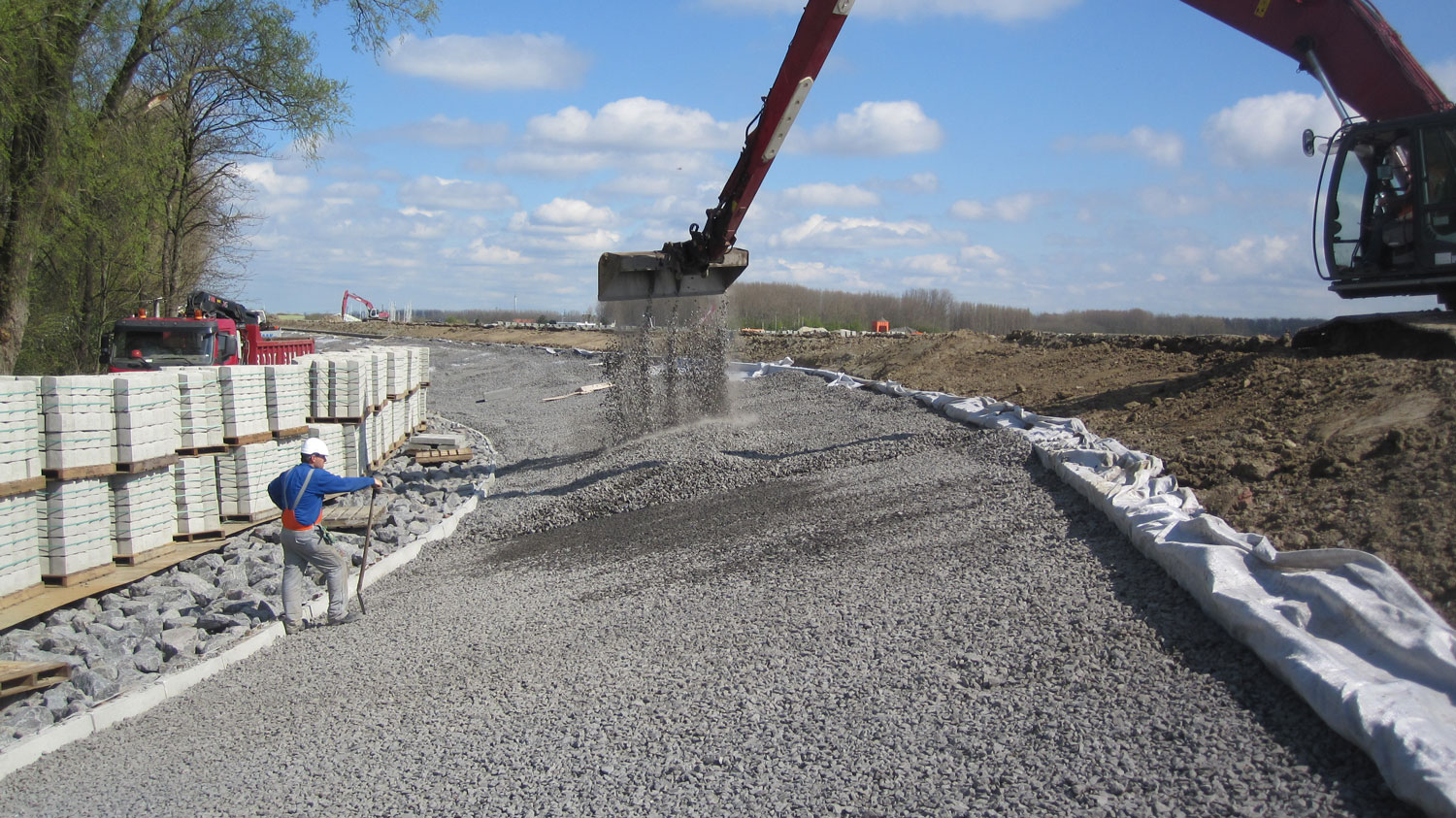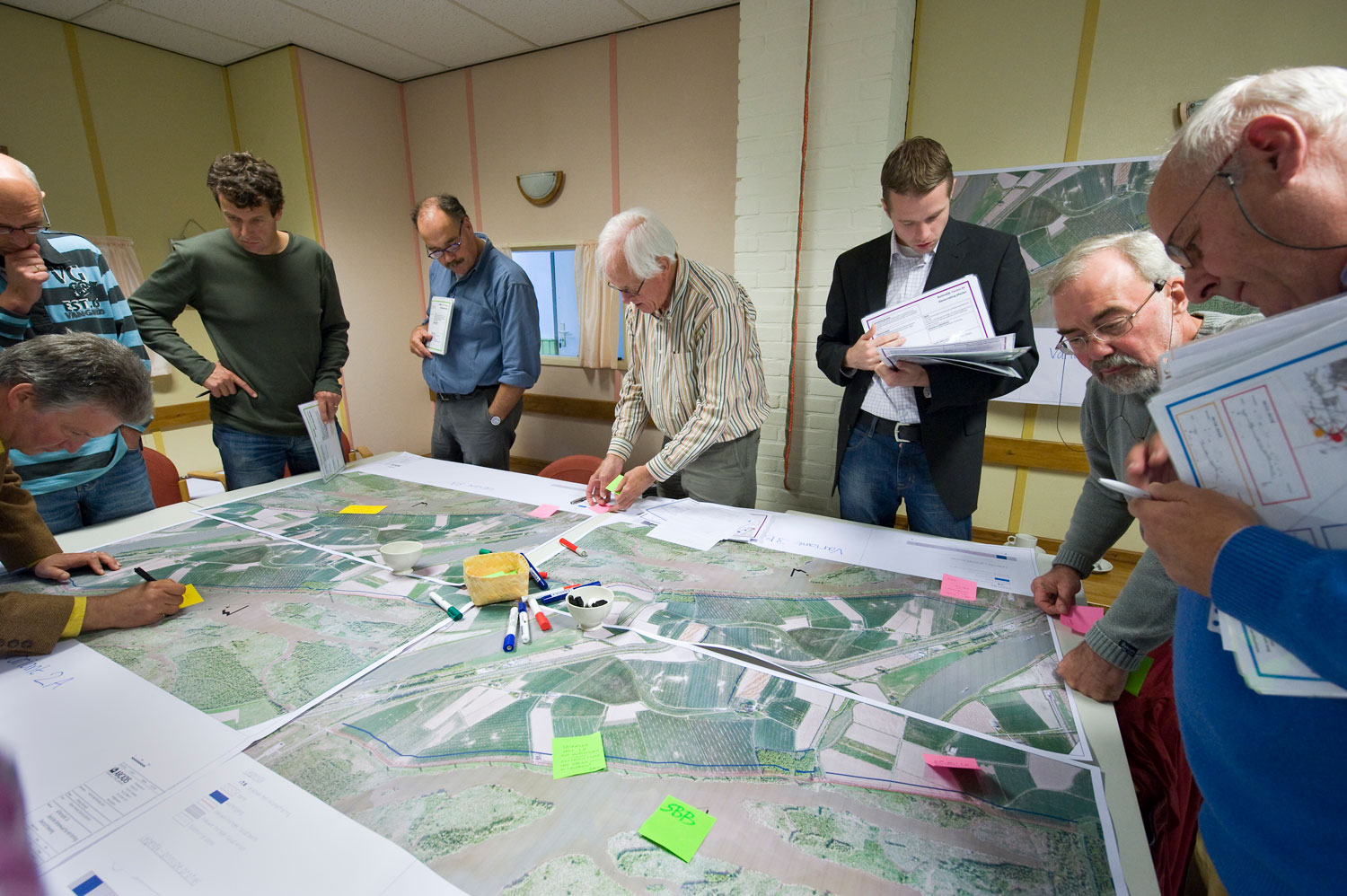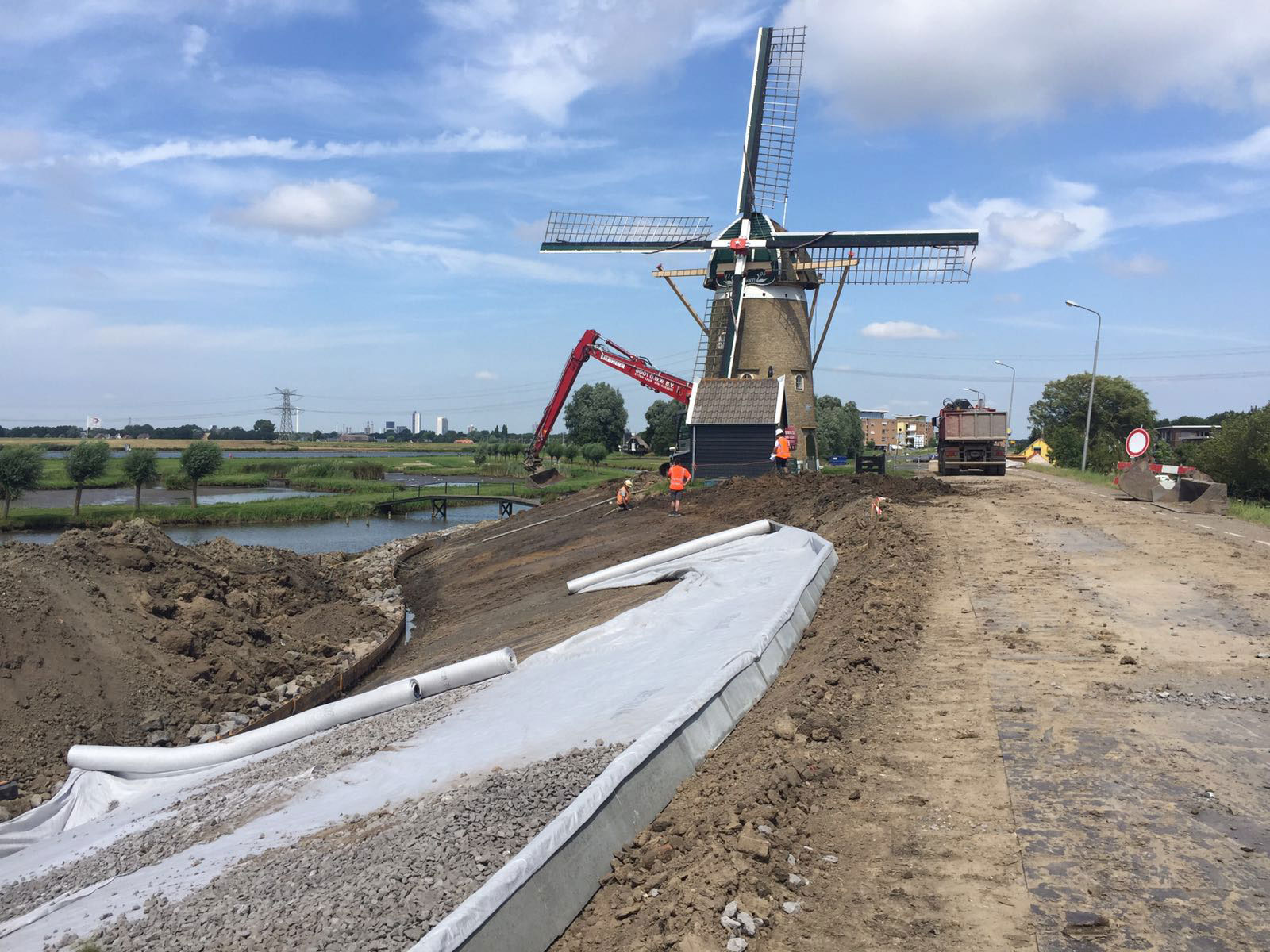The Netherlands work hard to maintain its ingenious network of dikes, barriers and sluices under the increasing pressure of climate change
When an old dike needs to be reinforced, Dutch engineers make it higher and wider. But in the small town of Nieuw-Beijerland, they ran into a problem. There are small historic houses on top of the dike. So they pressed 17-metre metal sheets into the core of the dike and made some modifications to the buildings.
It’s part of the investment programme of Waterschap Hollandse Delta, the water authority at work to reinforce 66 km of primary dikes between the river Haringvlient and the river Meuse, in the south-west of the Province of Zuid-Holland. This and other investments in water and wastewater facilities are backed by a EUR 120 million loan granted in July 2016 by the European Investment Bank.
The ground floor of the Het Wapen restaurant floods when the water rises, but its foundations are integrated into the dike and so is part of the water defence system that protects the whole town. That’s a sacrifice the owner Jan van den Berg made happily. “Now that the dike has been reinforced, I feel safer,” says van den Berg.

Vital dikes
Primary dikes are vital because they protect the land from overflows of rivers, canals and sea. “They are periodically tested against the current flood safety standards. Dike stretches that do not meet these standards, are upgraded or reinforced,” explains Aimilia Pistrika, an EIB engineer following the Waterschap Hollandse Delta’s project.
The dike reinforcement in Nieuw-Beijerland, which is in the Rotterdam metropolitan area and is one of the lowest points in the Netherlands, stabilises its structure against the pressure of the water and prevents water seeping through underneath. To avoid widening the base with earthworks, metal sheets are placed in the dike’s core along its length. Steel is, of course, flexible, light and recyclable.
Such solutions and safety standards were desperately lacking on 1 February 1953 when 1,800 Dutch people lost their lives in disastrous floods. The country thus embarked on a vast continuous “Delta Plan” to improve its flood defences. Meanwhile climate change has led to rising sea levels and more extreme weather, such as heavy rainfall.
Nieuw-Beijerland lies in the heart of a delta region where the North Sea and the rivers Meuse, Rhine, and Waal converge. With rising sea levels to the west and increased river discharges from the east, the risk of flooding is very high. “If the sea comes in and the river cannot go out, we’re in trouble,” says Roeland van Woerkom, programme manager for flood protection at Waterboard Hollandse Delta.
Every six years the water authority reassesses the dikes of the region against the flood protection standards and, if necessary, upgrades the dikes. “The risk is always there, so we must be on top of safety and maintenance all the time to protect our people,” says van Woerkom.

Let the water come
Water security is indeed about learning to cope with an acceptable level of risk. Climate change has increased this risk and generated more uncertainty than water managers have traditionally had to deal with.
Waterschap Hollandse Delta is one of the largest water authorities in the Netherlands, covering some 1,000 square kilometres where 870,000 people live. The Dutch water authorities are the oldest administrative bodies in the country, dating back to the 13th century, but also the most modern. From a peak of 3,500, they have been merged to 22 nationwide.
Since the planning in 2007, Waterschap Hollandse Delta has already reinforced nearly all of the planned 66 km of primary dikes. These works, including maintaining and improving canals, ditches, sluices and locks, represent 70% of the investments - EUR 180 million - covered by the EIB loan. “We informed the residents about possible solutions for the reinforcement of the dike and discussed with them how they could keep the inconvenience to a minimum,” says van Woerkom.
The rest of the investment - about EUR 90 million - concerns some renovation and maintenance works at Sluisjesdijk sludge treatment plant and Dokhaven wastewater plant, including pipelines and pumping stations to safeguard fresh water on Voorne and Goeree-Overflakkee islands.
All these works are part of the National Delta programme under which Dutch cities are preparing for the future. For Nieuw-Beijerland, climate change is an opportunity to make the town safer and more resilient to floods. The residents can rely on the reinforced dikes at least until 2050.

